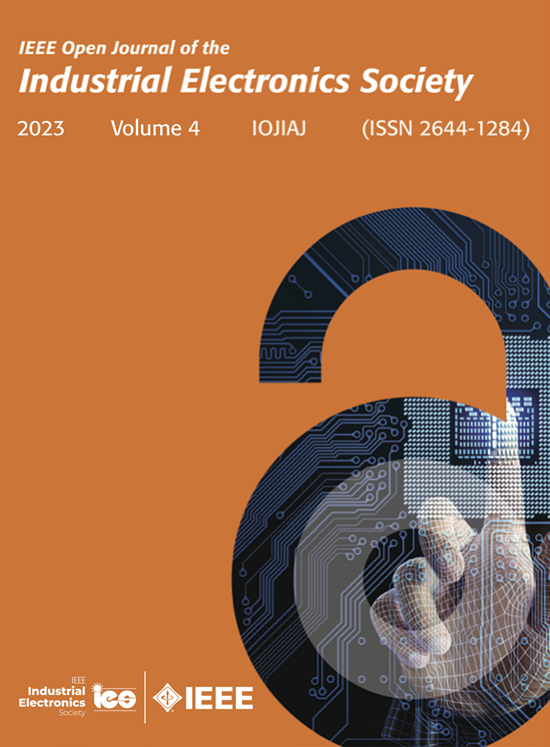MOV与RCD减震器组合下直流SSCBs的浪涌降压及经济性比较
IF 4.3
Q1 ENGINEERING, ELECTRICAL & ELECTRONIC
IEEE Open Journal of the Industrial Electronics Society
Pub Date : 2025-03-14
DOI:10.1109/OJIES.2025.3551369
引用次数: 0
摘要
金属氧化物压敏电阻(MOV)是一种非线性电阻元件,当外加电压超过某一阈值时,其电阻迅速下降。直流固态断路器(SSCB)使用带有电阻-电容-二极管(RCD)缓冲电路组合的MOV或MOV来降低断开故障电流时产生的浪涌电压。MOV和RCD电路元件加入越多,浪涌电压降低效果越大。然而,几个部分的增加导致缓冲电路的成本上升。本文旨在通过在传统的基于MOV的浪涌降压电路中加入MOV和RCD缓冲器组合,寻找一种既能提高浪涌降压率又不会显著增加成本的经济电路结构。首先,提出了三种采用MOV、R、C和二极管的电路组合。我们通过理论分析、仿真和实验对比了浪涌电压降低率,证实了所提出的缓冲电路结构有效地降低了浪涌电压。其次,对所提出的电路进行成本模型分析,计算元件的总价格。最后,通过实现1%的浪涌电压降低率所需的成本来评估所提出的缓冲电路的经济可行性。本文的结果有助于选择一种经济的电路结构,在传统的基于MOV的缓冲电路中结合额外的MOV或RCD缓冲器,以降低sscb的浪涌电压,同时最大限度地减少成本增加。本文章由计算机程序翻译,如有差异,请以英文原文为准。
Comparison of Surge Voltage Reduction and Economic Efficiency of DC SSCBs According to MOV and RCD Snubber Combination
Metal oxide varistor (MOV) is a nonlinear resistive element whose resistance decreases rapidly when the applied voltage exceeds a threshold value. A dc solid-state circuit breaker (SSCB) uses MOVs or MOV with resistor-capacitor-diode (RCD) snubber circuit combinations to reduce the surge voltage that occurs when breaking a fault current. The more MOV and RCD circuit components are added, the greater the surge voltage reduction effect. However, an increase in several parts leads to a rise in the cost of the snubber circuit. This article aims to find an economical circuit structure that improves the surge voltage reduction rate and does not increase the cost significantly by adding MOV and RCD snubber combinations to the conventional MOV-based surge voltage reduction circuits. First, three circuit combinations employing MOV, R, C, and diodes are presented. We confirm the proposed snubber circuit structures effectively reduce surge voltage by comparing surge voltage reduction rates through theoretical analysis, simulation, and experiment. Second, cost model analysis for the proposed circuits is used to calculate the total price of components. Finally, the economic feasibility of the proposed snubber circuits is evaluated by the cost required to achieve a 1% surge voltage reduction rate. The results of this article facilitate the selection of an economical circuit structure that combines additional MOV or RCD snubbers in the conventional MOV-based snubber circuits to reduce the surge voltage of SSCBs while minimizing cost increase.
求助全文
通过发布文献求助,成功后即可免费获取论文全文。
去求助
来源期刊

IEEE Open Journal of the Industrial Electronics Society
ENGINEERING, ELECTRICAL & ELECTRONIC-
CiteScore
10.80
自引率
2.40%
发文量
33
审稿时长
12 weeks
期刊介绍:
The IEEE Open Journal of the Industrial Electronics Society is dedicated to advancing information-intensive, knowledge-based automation, and digitalization, aiming to enhance various industrial and infrastructural ecosystems including energy, mobility, health, and home/building infrastructure. Encompassing a range of techniques leveraging data and information acquisition, analysis, manipulation, and distribution, the journal strives to achieve greater flexibility, efficiency, effectiveness, reliability, and security within digitalized and networked environments.
Our scope provides a platform for discourse and dissemination of the latest developments in numerous research and innovation areas. These include electrical components and systems, smart grids, industrial cyber-physical systems, motion control, robotics and mechatronics, sensors and actuators, factory and building communication and automation, industrial digitalization, flexible and reconfigurable manufacturing, assistant systems, industrial applications of artificial intelligence and data science, as well as the implementation of machine learning, artificial neural networks, and fuzzy logic. Additionally, we explore human factors in digitalized and networked ecosystems. Join us in exploring and shaping the future of industrial electronics and digitalization.
 求助内容:
求助内容: 应助结果提醒方式:
应助结果提醒方式:


